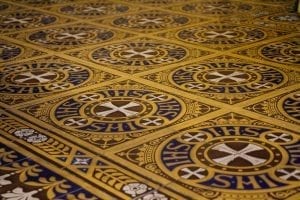The Chapel of All Hallows in Bellahouston Park was envisioned by the people of the Scottish Episcopal Church for the Empire Exhibition in Glasgow, 1938.
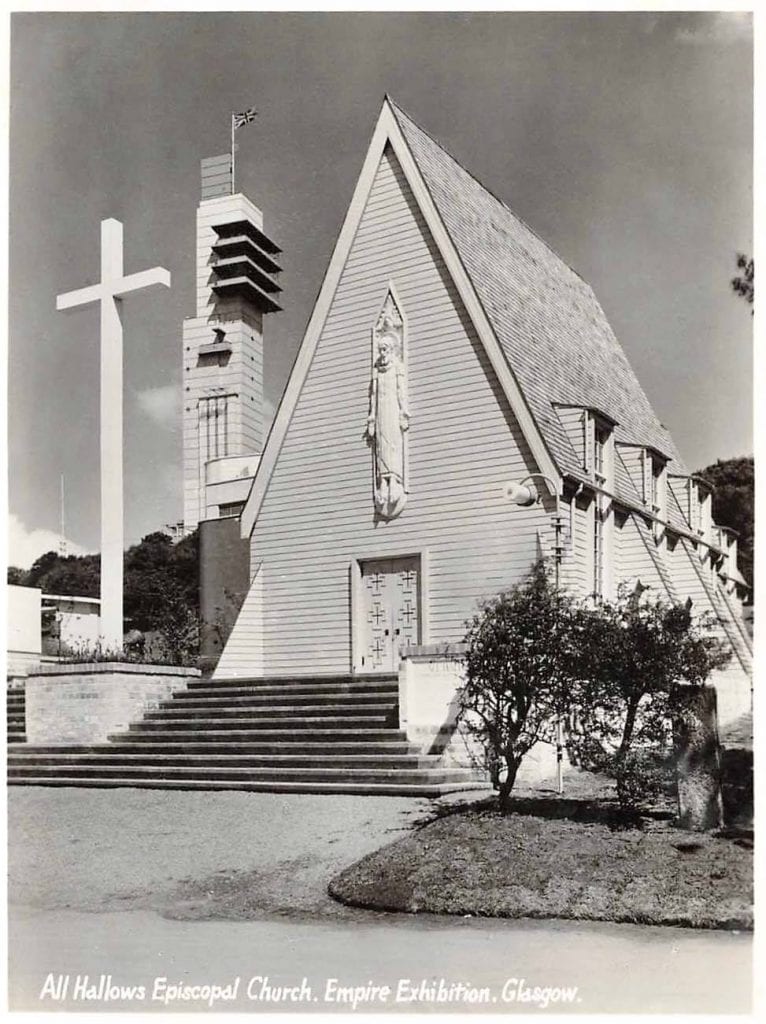
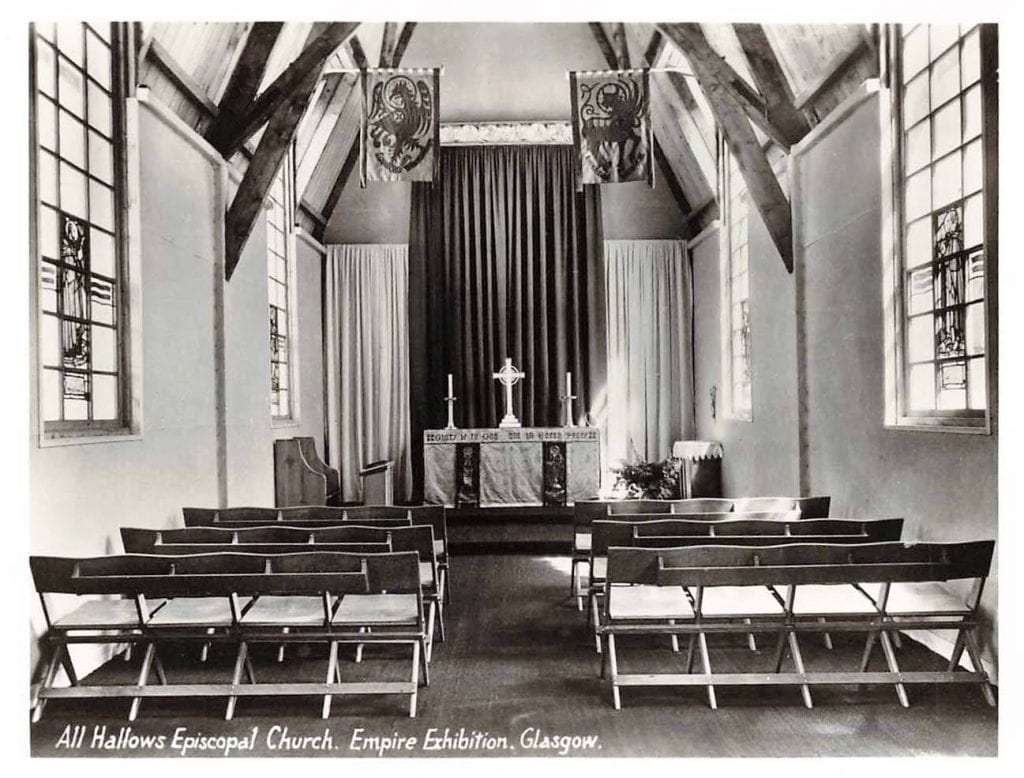
Designed by Mervyn Noad and Wallace of Glasgow, it was built by Speirs Ltd. (of tin tabernacle fame). The A-frame building was divided into a larger outer hall and inner chapel that could seat 40, both generously furnished with ecclesiastical artwork and items, most of which specially created by renowned artists in Scotland. Among them—Gladys A. Wyllie and Louisa Chart (textile artists and embroiderers), Margaret Chilton and Ralph Cowan (stained glass artists), Alick Woffenden (ceramic and glass artist), Archibald Dawson and Evelyn Beale (sculptors), Omar Ramsden (silversmith), Olive Carleton Smyth, Mabel Dawson, Joan Henderson, Ivy Gardiner, and many more.
Queen Elizabeth, the Queen Mother, gifted a special edition of the Scottish Prayer Book 1929.
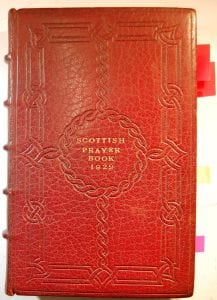
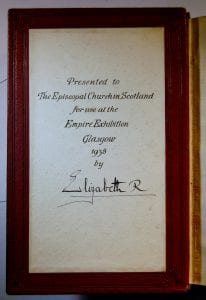
Among the many exhibits of church life in the hall, there were the now ubiquitous paintings of the Baptism at Stonehaven Jail and the Consecration of Bishop Seabury. Copies of both were sent to every Episcopal church in Scotland afterwards.
Much like the vast majority of other buildings in the Exhibition, the chapel was eventually demolished, when it was discovered that it could not be moved to a permanent location. It was intended that the chapel could house the congregation of Church of the Good Shepherd, Hillington, but another purpose-built design was chosen.
Items from the chapel were dispersed around the diocese, some currently at St Mary’s Cathedral, Glasgow, St Aidan’s, Clarkston, and Good Shepherd, Hillington.
All Hallows was built to share the Good News that the Scottish Episcopal Church was working to bring to the people of Scotland and the world. Unassuming in size, but charming in design, the chapel was worthy of telling the story of the Church and its people.

